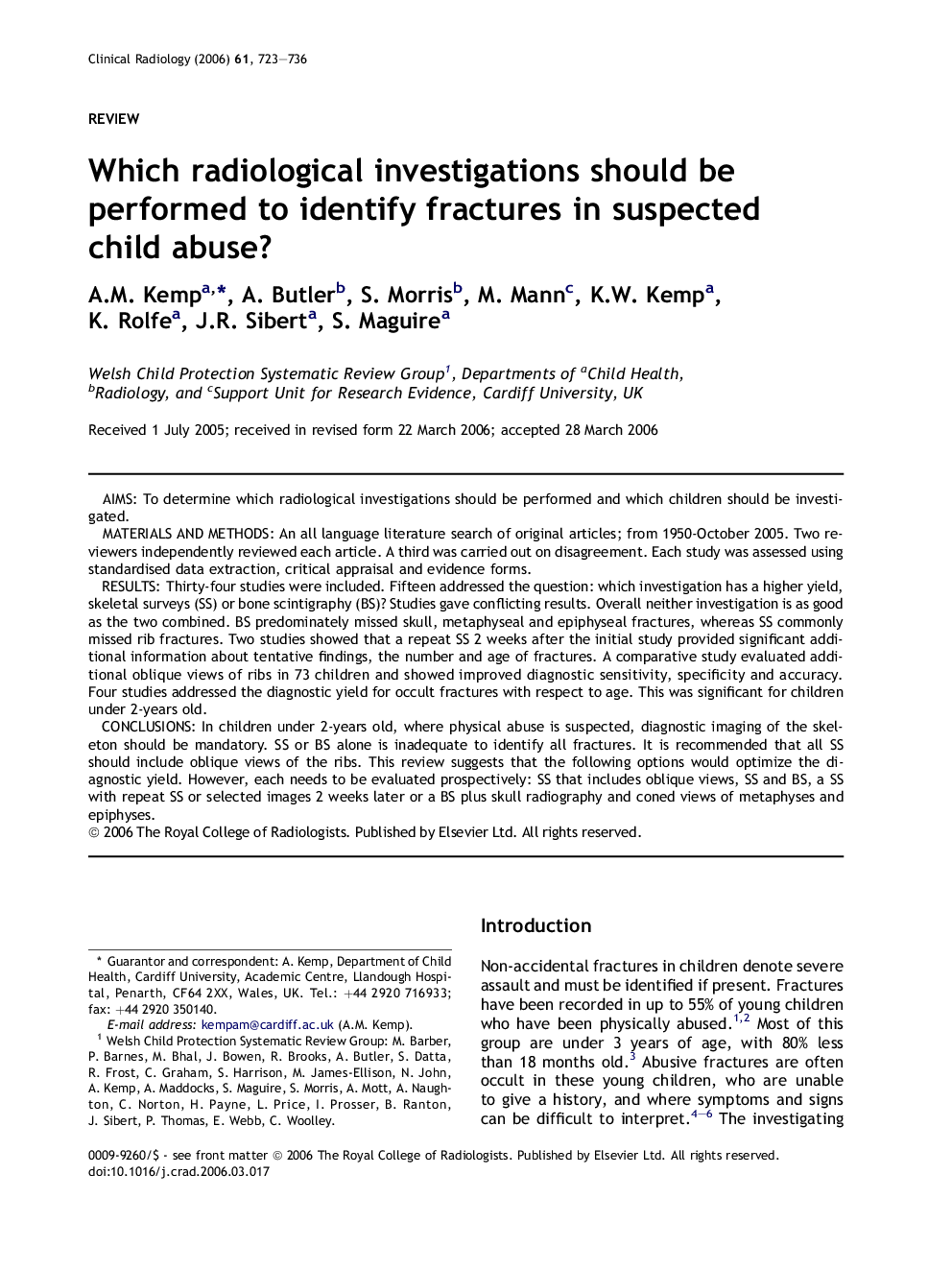| Article ID | Journal | Published Year | Pages | File Type |
|---|---|---|---|---|
| 3983648 | Clinical Radiology | 2006 | 14 Pages |
AimsTo determine which radiological investigations should be performed and which children should be investigated.Materials and methodsAn all language literature search of original articles; from 1950-October 2005. Two reviewers independently reviewed each article. A third was carried out on disagreement. Each study was assessed using standardised data extraction, critical appraisal and evidence forms.ResultsThirty-four studies were included. Fifteen addressed the question: which investigation has a higher yield, skeletal surveys (SS) or bone scintigraphy (BS)? Studies gave conflicting results. Overall neither investigation is as good as the two combined. BS predominately missed skull, metaphyseal and epiphyseal fractures, whereas SS commonly missed rib fractures. Two studies showed that a repeat SS 2 weeks after the initial study provided significant additional information about tentative findings, the number and age of fractures. A comparative study evaluated additional oblique views of ribs in 73 children and showed improved diagnostic sensitivity, specificity and accuracy. Four studies addressed the diagnostic yield for occult fractures with respect to age. This was significant for children under 2-years old.ConclusionsIn children under 2-years old, where physical abuse is suspected, diagnostic imaging of the skeleton should be mandatory. SS or BS alone is inadequate to identify all fractures. It is recommended that all SS should include oblique views of the ribs. This review suggests that the following options would optimize the diagnostic yield. However, each needs to be evaluated prospectively: SS that includes oblique views, SS and BS, a SS with repeat SS or selected images 2 weeks later or a BS plus skull radiography and coned views of metaphyses and epiphyses.
